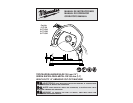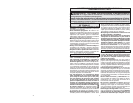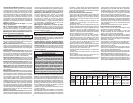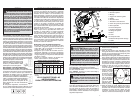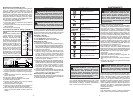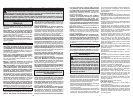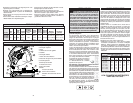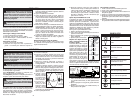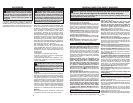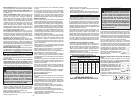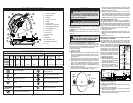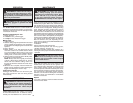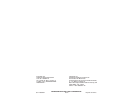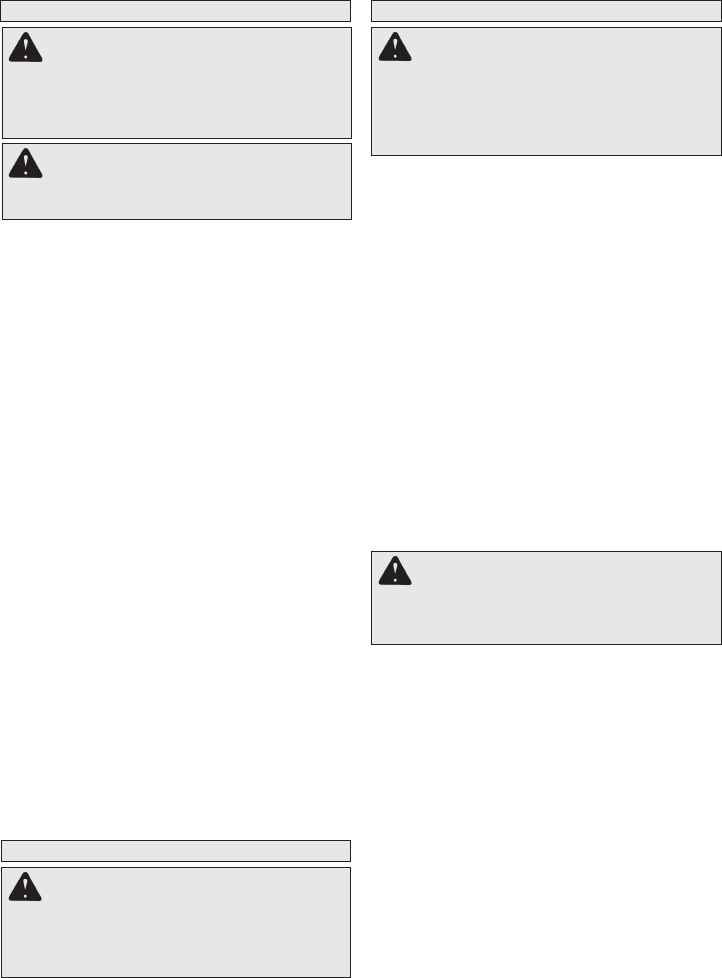
22
23
OPERATION
WARNING To reduce the risk of injury,
wear safety goggles or glasses with side
shields.
WARNING To reduce the risk of injury,
always unplug tool before attaching or remov-
ing accessories or making adjustments. Use
only specifi cally recommended accessories.
Others may be hazardous.
Selecting a Workpiece
The MILWAUKEE Abrasive Cut-Off Machine is
designed to cut steel and concrete. It is not recom-
mended for cutting wood. Do not attempt to install
a saw blade on the tool.
Starting and Stopping the Tool
1. Plug in the tool.
2. To start the tool, pull the trigger.
3. To stop the tool, release the trigger.
Making a Cut
1. Unplug the tool.
2. Select a cutting angle and position the fence and
vise to support the workpiece (see “Supporting
the Workpiece and Adjusting the Vise and Fence
System”).
3. Plug in the tool.
4. Before starting a cut, step back from the tool
and make a trial run to confi rm that the wheel
is in good condition. Before using a new cut-off
wheel, run the tool for at least 3 minutes. Before
starting work, run the tool for at least 1 minute.
5. Allow the motor to reach full speed. Slowly lower
the wheel into the workpiece.
NOTE: Always start the cut gently; do not bang
or bump a wheel when starting the cut. For the
safest and most effi cient cutting, make sure
that the cut-off wheel contacts the center of the
workpiece.
6. When the cut is complete, raise the wheel com-
pletely from the workpiece before releasing the
trigger and allowing the motor to stop.
Trigger Hole Lock-Off
The trigger hole allows the user to insert a pad-
lock. This prevents the tool from being started
unintentionally.
MAINTENANCE
Maintaining Tools
Keep your tool in good repair by adopting a regular
maintenance program. Before use, examine the gen-
eral condition of your tool. Inspect guards, switches,
tool cord set and extension cord for damage. Check
for loose screws, misalignment, binding of moving
parts, improper mounting, broken parts and any
other condition that may affect its safe operation. If
abnormal noise or vibration occurs, turn the tool off
immediately and have the problem corrected before
further use. Do not use a damaged tool. Tag damaged
tools “DO NOT USE” until repaired (see “Repairs”).
Under normal conditions, relubrication is not neces-
sary until the motor brushes need to be replaced.
After six months to one year, depending on use,
return your tool to the nearest MILWAUKEE service
facility for the following:
• Lubrication
• Brush inspection and replacement
• Mechanical inspection and cleaning (gears,
spindles, bearings, housing, etc.)
• Electrical inspection (switch, cord, armature, etc.)
• Testing to assure proper mechanical and electrical
operation
Cleaning
Clean dust and debris from vents. Keep the tool
handles clean, dry and free of oil or grease. Use
only mild soap and a damp cloth to clean your tool
since certain cleaning agents and solvents are
harmful to plastics and other insulated parts. Some
of these include: gasoline, turpentine, lacquer thin-
ner, paint thinner, chlorinated cleaning solvents,
ammonia and household detergents containing
ammonia. Never use fl ammable or combustible
solvents around tools.
Repairs
If your tool is damaged, return the entire tool to the
nearest service center.
ACCESSORIES
For a complete listing of accessories refer to your
MILWAUKEE Electric Tool catalog or go on-line
to www.milwaukeetool.com. To obtain a catalog,
contact your local distributor or a service center.
WARNING To reduce the risk of
injury, always unplug your tool before
performing any maintenance. Never disas-
semble the tool or try to do any rewiring
on the tool’s electrical system. Contact a
MILWAUKEE service facility for ALL repairs.
WARNING To reduce the risk of injury,
electric shock and damage to the tool, never
immerse your tool in liquid or allow a liquid
to fl ow inside the tool.
WARNING To reduce the risk of injury,
always unplug the tool before attaching or
removing accessories. Use only specifi cally
recommended accessories. Others may be
hazardous.



